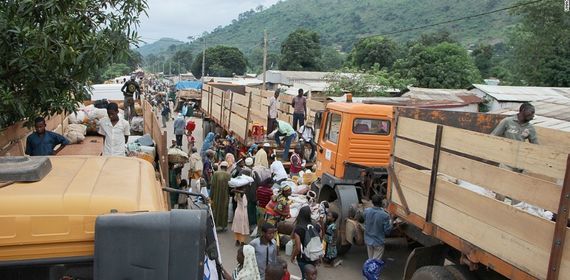
Forcibly Displaced Populations Arriving in Fragile Cities
The World Bank Partners with Georgetown to Explore Displacement and Urbanization In Global Cities
A. Clark
August 1, 2019
The majority of global refugees, asylum seekers, and displaced people don’t live in tented camps. They live in cities. And more often than not, they live in cities that are themselves often reeling from the aftershock of conflict, natural disasters, or economic instability. Understanding how to effectively finance, accommodate, and integrate rapid increases in urban populations who are forcibly displaced was the subject of a recent forum conducted at the World Bank in partnership with Georgetown University.
Titled “Forced Displacement and Urbanization: Moving to Preparedness,” the forum brought together global thought leaders on the topics of migration, refugees, economics, urban planning, disaster preparedness, development, policy, and cultural and sociological research. Three Georgetown faculty members, Katharine Donato, Anne Richard, and Uwe Brandes made presentations at the forum as contributing researchers, moderators, and thought-leaders. The purpsoe of the event was to advance the dialogue on how cities can address, finance, and support the unique, individual needs of displaced people across the globe.
Displaced people may initially require humanitarian aid, but in short order they seek social, economic, and spatial integration into their new host communities. The policies and practices of this integration are often overlooked by policy-makers and the media who historically bias the “refugee camp” as the dramatic expression of humanitarian crisis. Given the decentralized nature of urban integration of displaced people, it becomes increasingly difficult to effectively provide much-needed aid, resources, economic opportunities, and scaled infrastructure when the displaced population is spread across neighborhoods and multi-jurisdictional metropolitan regions.
A key challenge identified during the discussion was the limited scope of existing data. Attendees were particularly excited to learn of a longitudinal study being directed by Dr. Donato at Georgetown University’s Institute for the Study of International Migration. The Georgetown study, Access to Durable Solutions for Internally Displaced Persons in Iraq, is unique due to its comprehensive and longitudinal nature.
The World Bank’s Director of Urban and Territorial Development, Sameh Nuguib Wahba, provided closing remarks. Wahba noted that the three main drivers of displacement are urbanization, conflict, and climate change. Economies recover and conflicts resolve, but climate change threatens to render vulnerable lands uninhabitable, displacing people permanently.
Georgetown and the World Bank are scoping collaborative research agendas to bring more data, knowledge, and attention to the topic of forced migration to cities. Given Wahba’s insights, the future of global cities is a future that will include forcibly displaced populations.

